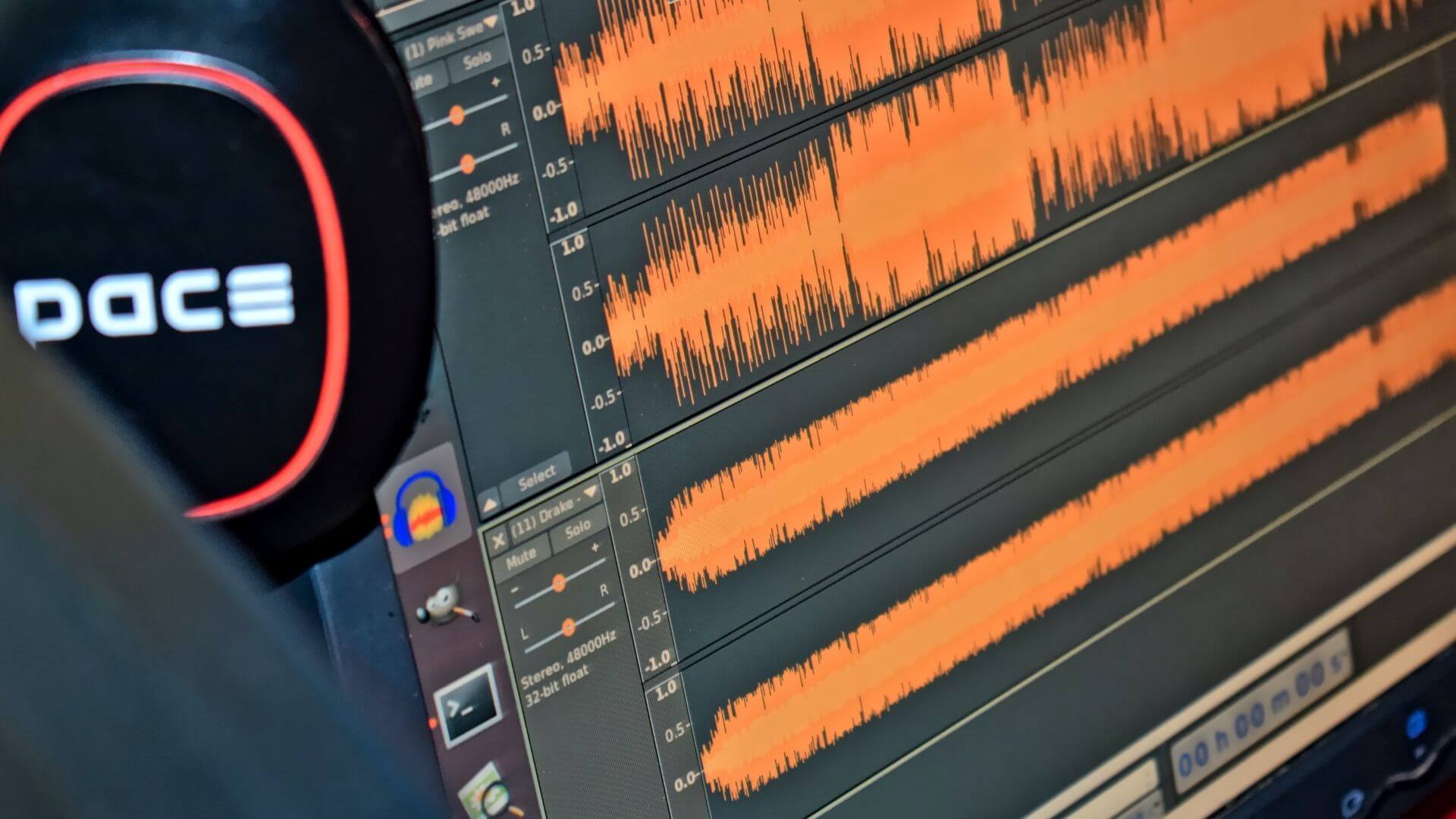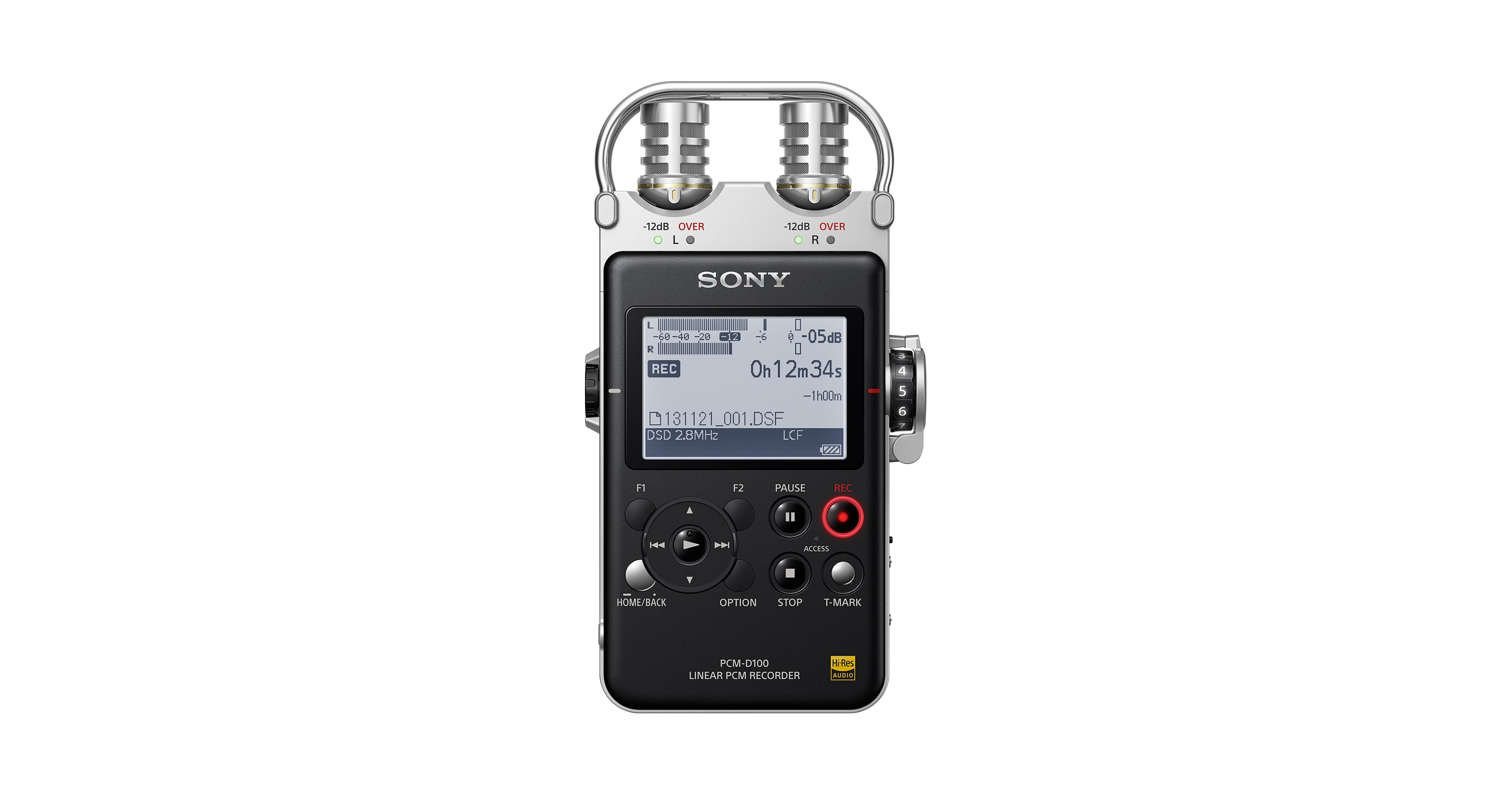Home>Production & Technology>Digital>What Is Digital Distribution Of Music


Digital
What Is Digital Distribution Of Music
Published: March 10, 2024
Learn about the digital distribution of music and how it revolutionizes the industry. Explore the benefits and process of distributing music online.
(Many of the links in this article redirect to a specific reviewed product. Your purchase of these products through affiliate links helps to generate commission for AudioLover.com, at no extra cost. Learn more)
Table of Contents
Introduction
The music industry has undergone a remarkable transformation in recent decades, largely due to the advent of digital distribution. This evolution has revolutionized the way music is created, consumed, and shared, reshaping the entire landscape of the industry. Digital distribution has empowered artists, producers, and record labels to reach global audiences with unprecedented ease and efficiency. In this article, we will delve into the intricacies of digital distribution, exploring its impact, mechanisms, and the key players driving this dynamic ecosystem.
The traditional methods of music distribution, such as physical CDs and vinyl records, have gradually given way to digital platforms. This shift has not only altered the way music is delivered to listeners but has also redefined the very essence of the music industry. With the rise of digital distribution, artists no longer rely solely on record labels to showcase their work; instead, they can independently distribute their music to a vast online audience. This democratization of music distribution has fostered a diverse and vibrant musical landscape, allowing for the discovery of new talents and genres that might have remained undiscovered in the past.
As we navigate through the intricacies of digital distribution, it becomes evident that this paradigm has not only expanded the reach of music but has also transformed the listening experience for audiences worldwide. The convenience of accessing music through digital platforms has empowered listeners to explore a vast array of musical genres and artists, transcending geographical boundaries and cultural barriers. Moreover, the seamless integration of digital distribution with streaming services has revolutionized the way music is consumed, offering personalized playlists, recommendations, and a myriad of interactive features that enrich the overall listening experience.
In the subsequent sections of this article, we will delve deeper into the mechanics of digital distribution, shedding light on its operational framework, benefits, challenges, and the key entities that shape this dynamic ecosystem. By unraveling the complexities of digital distribution, we aim to provide a comprehensive understanding of its profound impact on the music industry and the opportunities it presents for artists, listeners, and industry stakeholders alike.
The Evolution of Music Distribution
The evolution of music distribution is a captivating journey that reflects the dynamic interplay between technology, consumer behavior, and the creative endeavors of artists. Historically, music distribution was predominantly reliant on physical formats such as vinyl records, cassette tapes, and compact discs. These tangible mediums served as the primary conduits through which music reached audiences, shaping the entire music industry landscape. However, the emergence of digital technology heralded a seismic shift in the distribution paradigm, redefining the very essence of how music is disseminated and consumed.
The transition from physical to digital distribution can be traced back to the late 20th century, marked by the advent of the internet and the proliferation of digital audio formats. This transformative phase witnessed the emergence of MP3 files, which revolutionized the way music was stored, shared, and transmitted. The portability and accessibility of digital music files paved the way for a new era in music distribution, enabling listeners to carry vast libraries of music on portable devices and computers.
The early 2000s witnessed the rise of pioneering digital music platforms such as Napster, which introduced peer-to-peer file sharing, fundamentally altering the traditional distribution model. While this disruptive phase posed significant challenges to the established music industry, it also laid the groundwork for the subsequent evolution of legitimate digital distribution channels. The launch of iTunes in 2001 further catalyzed the digital music revolution, offering a legal and user-friendly platform for purchasing and downloading music.
As the digital landscape continued to evolve, streaming services emerged as a dominant force in music distribution. Platforms like Spotify, Apple Music, and Tidal revolutionized the way audiences accessed music, shifting the focus from ownership to on-demand streaming. This shift not only transformed consumer behavior but also presented new opportunities for artists to reach global audiences without the constraints of physical production and distribution.
The evolution of music distribution has transcended mere technological advancements; it has redefined the very essence of the music industry, democratizing access to music and empowering artists to connect directly with their fan base. The convergence of digital distribution with social media and online marketing has further amplified the reach and impact of music, fostering a vibrant and diverse musical ecosystem.
In essence, the evolution of music distribution mirrors the dynamic interplay between technological innovation, consumer preferences, and the creative pursuits of artists. This ongoing evolution continues to shape the music industry, offering new avenues for discovery, engagement, and artistic expression in the digital age.
What Is Digital Distribution?
Digital distribution refers to the process of delivering music content to online platforms and streaming services, enabling artists to reach a global audience without the constraints of physical production and distribution. Unlike traditional methods that relied on physical formats such as CDs and vinyl records, digital distribution leverages digital audio files and online platforms to disseminate music to listeners worldwide.
At its core, digital distribution encompasses the seamless transfer of music content from artists, producers, or record labels to digital platforms, where it becomes accessible to audiences through streaming, downloading, or other online channels. This paradigm shift has not only democratized music distribution but has also empowered artists to independently showcase their work, bypassing the traditional gatekeepers of the industry.
The advent of digital distribution has revolutionized the way music is discovered, consumed, and shared. It has transcended geographical boundaries, allowing artists from diverse cultural backgrounds to connect with audiences on a global scale. Moreover, digital distribution has facilitated a direct and immediate connection between artists and their fan base, fostering a more intimate and interactive relationship that transcends the limitations of physical distribution channels.
In essence, digital distribution has redefined the very essence of music dissemination, offering a dynamic and accessible platform for artists to showcase their creativity and connect with audiences worldwide. This transformative paradigm has not only expanded the reach of music but has also enriched the listening experience for audiences, offering a diverse array of musical genres and artists at their fingertips.
The rise of digital distribution has also catalyzed the emergence of innovative business models and revenue streams for artists, including streaming royalties, digital downloads, and online merchandising. This shift has empowered artists to navigate the music industry with greater autonomy and control over their creative output, fostering a more sustainable and equitable ecosystem for creators.
In essence, digital distribution represents a pivotal shift in the music industry, offering unprecedented opportunities for artists to amplify their reach, engage with audiences, and navigate the ever-evolving landscape of music consumption in the digital age.
How Does Digital Distribution Work?
Digital distribution operates through a multifaceted framework that encompasses the seamless transfer of music content from creators to online platforms and streaming services, ultimately reaching a global audience. The process begins with artists, producers, or record labels preparing their music for distribution in digital formats, such as MP3, WAV, or FLAC files. These digital audio files serve as the foundational assets that will be disseminated across various online channels.
Once the music content is ready for distribution, artists or rights holders engage with digital distribution platforms or aggregators. These entities act as intermediaries, facilitating the delivery of music to a diverse array of online platforms, including streaming services, digital stores, and social media networks. Digital distribution platforms streamline the process of reaching global audiences by leveraging their network of partnerships with major streaming services and online retailers.
Upon engaging with a digital distribution platform, artists or rights holders upload their music content, along with accompanying metadata such as track titles, album artwork, and relevant information about the release. This metadata serves as crucial identifiers that enable the accurate categorization and presentation of music across digital platforms, ensuring a seamless and engaging experience for listeners.
Once the music content and metadata are submitted, the digital distribution platform undertakes the task of delivering the music to a wide spectrum of online channels. This process involves encoding the music files into various formats optimized for streaming and downloading, while also ensuring that the content adheres to the technical specifications of each platform.
Upon successful delivery, the music content becomes accessible to audiences through streaming services, digital stores, and social media platforms. Listeners can then discover, stream, purchase, or share the music, thereby engaging with the content in diverse ways that resonate with their preferences and behaviors.
From a commercial standpoint, digital distribution platforms also play a pivotal role in tracking and reporting the performance of music releases. This involves monitoring streaming metrics, digital sales, and other relevant data points, providing artists and rights holders with insights into the reach and impact of their music across various online platforms.
In essence, digital distribution operates as a dynamic conduit that empowers artists to showcase their creativity, connect with audiences worldwide, and navigate the ever-evolving landscape of music consumption in the digital age. This process not only amplifies the reach of music but also fosters a more inclusive and accessible ecosystem for artists and listeners alike.
Benefits of Digital Distribution
Digital distribution offers a myriad of compelling benefits that have reshaped the music industry landscape, empowering artists, engaging audiences, and fostering a more inclusive and accessible ecosystem. These benefits encompass a diverse array of opportunities that transcend the limitations of traditional distribution models, amplifying the reach and impact of music in the digital age.
Global Reach and Accessibility
One of the foremost advantages of digital distribution is its capacity to connect artists with a global audience. By leveraging online platforms and streaming services, artists can transcend geographical boundaries, reaching listeners in diverse regions and cultural contexts. This global reach not only amplifies the visibility of music but also fosters cross-cultural engagement, enabling artists to connect with audiences worldwide.
Autonomy and Control
Digital distribution empowers artists with greater autonomy and control over their creative output. Unlike traditional distribution models that often necessitated reliance on record labels or physical production, digital distribution allows artists to independently showcase their work, bypassing the traditional gatekeepers of the industry. This autonomy fosters a more equitable and sustainable ecosystem, enabling artists to navigate the music industry with enhanced agency and creative freedom.
Diverse Revenue Streams
The shift to digital distribution has catalyzed the emergence of diverse revenue streams for artists, including streaming royalties, digital downloads, and online merchandising. This multifaceted approach to monetization offers artists the opportunity to generate income from various channels, thereby diversifying their revenue streams and enhancing their financial sustainability. Moreover, digital distribution platforms provide transparent reporting and analytics, enabling artists to gain insights into their earnings and audience engagement.
Enhanced Discoverability and Engagement
Digital distribution platforms and streaming services offer robust tools for discoverability and engagement, enabling artists to connect with audiences in meaningful ways. Through curated playlists, personalized recommendations, and social media integration, artists can amplify their visibility and engage with listeners on a deeper level. This fosters a more interactive and immersive experience for audiences, enriching the connection between artists and their fan base.
Environmental Sustainability
The transition to digital distribution aligns with environmental sustainability efforts by reducing the carbon footprint associated with physical production and distribution. By minimizing the reliance on physical formats such as CDs and vinyl records, digital distribution contributes to a more environmentally conscious approach to music dissemination, aligning with broader initiatives for sustainability and eco-friendly practices.
In essence, digital distribution embodies a transformative paradigm that offers a wealth of benefits for artists, audiences, and industry stakeholders. This dynamic shift not only amplifies the global reach of music but also fosters a more inclusive, sustainable, and engaging ecosystem that resonates with the evolving landscape of music consumption in the digital age.
Challenges of Digital Distribution
While digital distribution has ushered in a new era of accessibility and empowerment for artists, it also presents a set of distinct challenges that shape the dynamics of the music industry in the digital age. These challenges encompass a range of complexities that influence the operational, economic, and creative facets of music distribution, necessitating strategic navigation and innovative solutions.
Fragmentation of Platforms and Revenue Streams
The proliferation of digital platforms and streaming services has led to a fragmented landscape, wherein artists must navigate a diverse array of channels to reach their audience. This fragmentation poses challenges in terms of managing multiple distribution channels, optimizing content for various platforms, and consolidating revenue streams from disparate sources. As a result, artists and rights holders are tasked with devising comprehensive distribution strategies that effectively leverage the diverse ecosystem of digital platforms while ensuring equitable compensation for their creative endeavors.
Monetization and Fair Compensation
The transition to digital distribution has reshaped the monetization landscape for artists, introducing new paradigms of revenue generation and consumption. However, this shift has also sparked debates surrounding fair compensation, particularly in the context of streaming royalties and digital downloads. The complex interplay between streaming metrics, royalty structures, and artist compensation models has prompted discussions about equitable remuneration and the sustainability of revenue streams in the digital era. Addressing these challenges requires a nuanced approach that balances the interests of artists, streaming platforms, and audiences, fostering a more equitable and transparent framework for monetization.
Discoverability and Visibility
Amidst the vast expanse of digital content, artists face the challenge of standing out and gaining visibility in a crowded landscape. The democratization of music distribution has led to an unprecedented influx of content, necessitating strategic efforts to enhance discoverability and audience engagement. Artists must navigate the intricacies of algorithmic curation, playlist placements, and social media outreach to amplify their visibility and connect with audiences. This challenge underscores the importance of robust marketing strategies, compelling storytelling, and innovative promotional tactics to cut through the digital noise and resonate with listeners.
Technological Advancements and Adaptation
The rapid evolution of digital technology presents an ongoing challenge for artists and industry stakeholders, requiring continuous adaptation to emerging trends and technological advancements. From immersive audio formats to interactive music experiences, the dynamic landscape of digital distribution demands a proactive approach to harnessing innovative tools and platforms. This necessitates a commitment to ongoing learning, technological literacy, and agile adaptation to the evolving paradigms of music consumption and distribution.
In essence, the challenges of digital distribution underscore the multifaceted nature of the music industry in the digital age, prompting artists, rights holders, and industry stakeholders to navigate a complex terrain of fragmentation, monetization, discoverability, and technological evolution. By addressing these challenges with strategic foresight and collaborative innovation, the music industry can forge a more resilient, inclusive, and sustainable ecosystem that resonates with the dynamic landscape of digital distribution.
Key Players in Digital Distribution
In the dynamic ecosystem of digital distribution, several key players play pivotal roles in shaping the landscape of music dissemination and consumption. These entities encompass a diverse array of stakeholders, platforms, and aggregators that facilitate the seamless transfer of music content from creators to global audiences. Understanding the roles and contributions of these key players is essential to comprehending the intricate dynamics of digital distribution and its profound impact on the music industry.
Digital Distribution Platforms and Aggregators
Digital distribution platforms and aggregators serve as linchpins in the process of delivering music content to online channels and streaming services. These entities act as intermediaries, enabling artists, producers, and record labels to upload and distribute their music across a vast network of online platforms. By leveraging partnerships with major streaming services and digital stores, digital distribution platforms streamline the process of reaching global audiences, offering comprehensive tools for metadata management, content delivery, and performance tracking.
Streaming Services
Streaming services represent a cornerstone of digital distribution, offering audiences access to an extensive catalog of music through on-demand streaming and personalized recommendations. Platforms such as Spotify, Apple Music, Amazon Music, and Tidal have redefined the listening experience, providing listeners with a diverse array of music genres, curated playlists, and interactive features. These streaming services not only amplify the visibility of artists but also offer robust tools for discoverability, engagement, and monetization, thereby shaping the dynamics of music consumption in the digital age.
Digital Stores and Online Retailers
Digital stores and online retailers serve as prominent channels for music distribution, offering audiences the opportunity to purchase and download music in digital formats. Platforms like iTunes, Google Play Music, and Bandcamp provide artists with avenues for direct sales and digital downloads, complementing the streaming experience with options for ownership and offline access. These digital stores play a crucial role in monetizing music content, offering artists diverse revenue streams and opportunities for direct engagement with their fan base.
Social Media and User-Generated Content Platforms
Social media platforms and user-generated content sites have emerged as influential channels for music discovery and engagement. Platforms such as YouTube, Instagram, and TikTok enable artists to showcase their music, connect with audiences, and leverage user-generated content for promotional purposes. The viral nature of social media and user-generated platforms has reshaped the dynamics of music promotion, offering artists avenues for organic reach, fan interaction, and creative expression.
Record Labels and Independent Distributors
Record labels and independent distributors continue to play significant roles in digital distribution, leveraging their expertise, resources, and industry connections to amplify the reach of music content. While independent artists can directly engage with digital distribution platforms, record labels and distributors offer strategic support, marketing prowess, and industry relationships that can enhance the visibility and commercial success of music releases. This collaborative dynamic underscores the diverse pathways available to artists for navigating the digital distribution landscape.
In essence, the key players in digital distribution collectively shape the multifaceted ecosystem of music dissemination, offering artists, audiences, and industry stakeholders a diverse array of channels, tools, and opportunities for engagement. By understanding the roles and contributions of these entities, artists can navigate the digital distribution landscape with strategic foresight, leveraging the dynamic interplay of platforms, services, and industry partnerships to amplify their reach and impact in the digital age.
Conclusion
The evolution of music distribution from physical formats to digital platforms has ushered in a transformative era that empowers artists, engages audiences, and reshapes the dynamics of the music industry. The advent of digital distribution has democratized access to music, offering artists unprecedented opportunities to reach global audiences, connect with their fan base, and navigate the ever-evolving landscape of music consumption in the digital age.
Digital distribution has not only expanded the global reach of music but has also fostered a more inclusive and accessible ecosystem that transcends geographical boundaries and cultural barriers. This paradigm shift has empowered artists with greater autonomy and control over their creative output, enabling them to independently showcase their work, bypassing the traditional gatekeepers of the industry. The multifaceted approach to monetization, including streaming royalties, digital downloads, and online merchandising, has diversified revenue streams for artists, fostering a more sustainable and equitable framework for compensation.
While digital distribution presents a set of distinct challenges, including fragmentation of platforms, fair compensation, discoverability, and technological adaptation, these complexities underscore the dynamic nature of the music industry in the digital age. By addressing these challenges with strategic foresight and collaborative innovation, the music industry can forge a more resilient, inclusive, and sustainable ecosystem that resonates with the evolving landscape of digital distribution.
The key players in digital distribution, including platforms, streaming services, digital stores, social media, and industry stakeholders, collectively shape a diverse array of channels, tools, and opportunities for artists to amplify their reach and impact. Understanding the roles and contributions of these entities is essential for artists to navigate the digital distribution landscape with strategic foresight, leveraging the dynamic interplay of platforms, services, and industry partnerships.
In essence, digital distribution embodies a transformative paradigm that offers a wealth of benefits for artists, audiences, and industry stakeholders. This dynamic shift not only amplifies the global reach of music but also fosters a more inclusive, sustainable, and engaging ecosystem that resonates with the evolving landscape of music consumption in the digital age. As the music industry continues to evolve, digital distribution will remain a cornerstone of innovation, creativity, and connectivity, shaping the future of music dissemination and consumption for generations to come.











